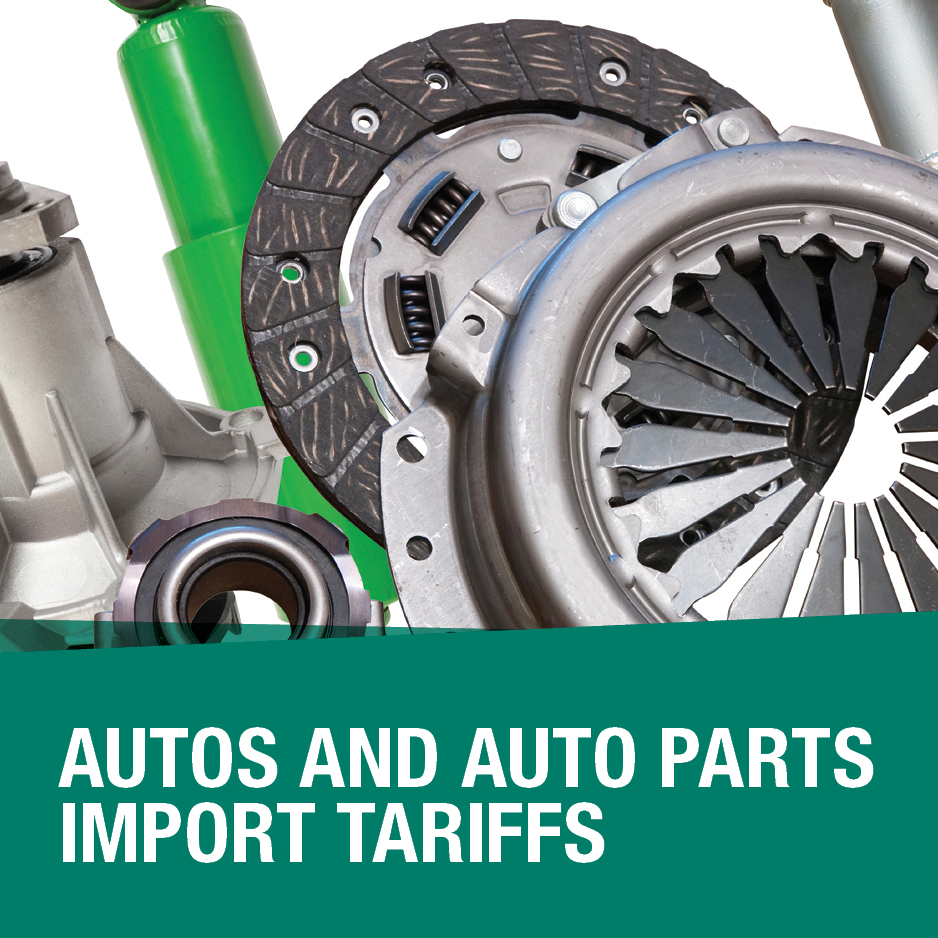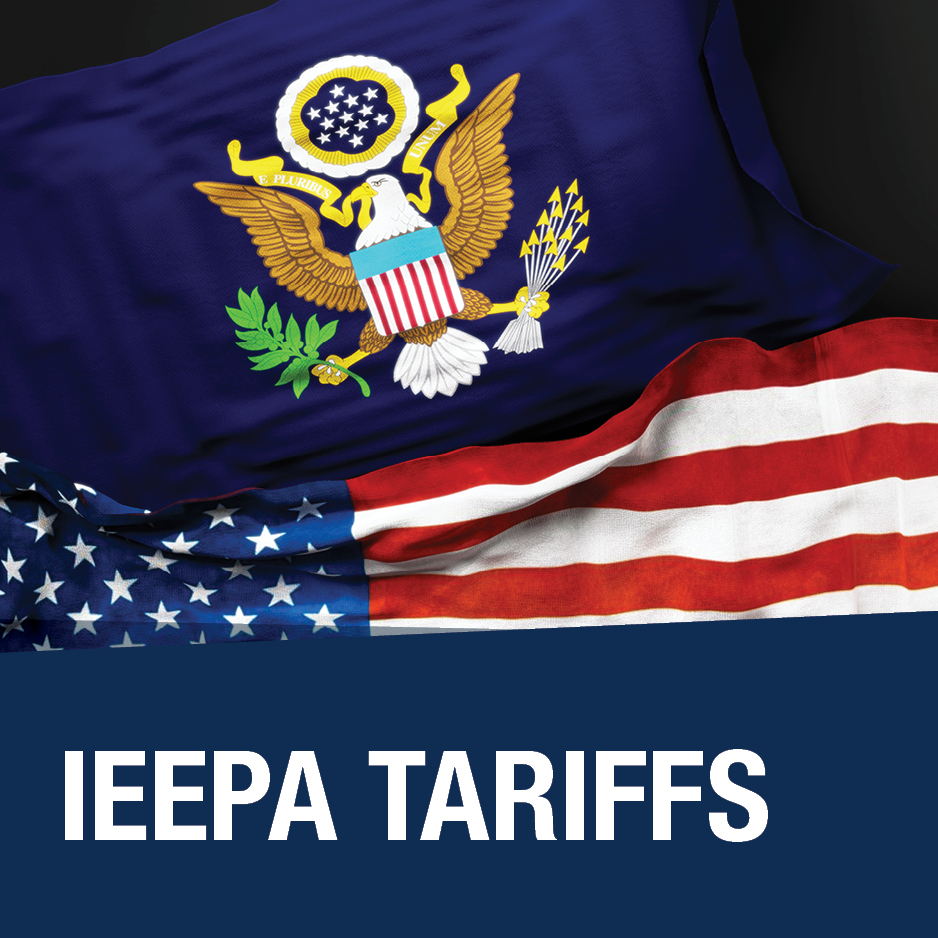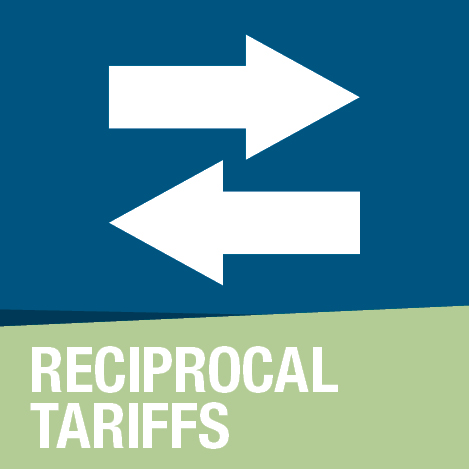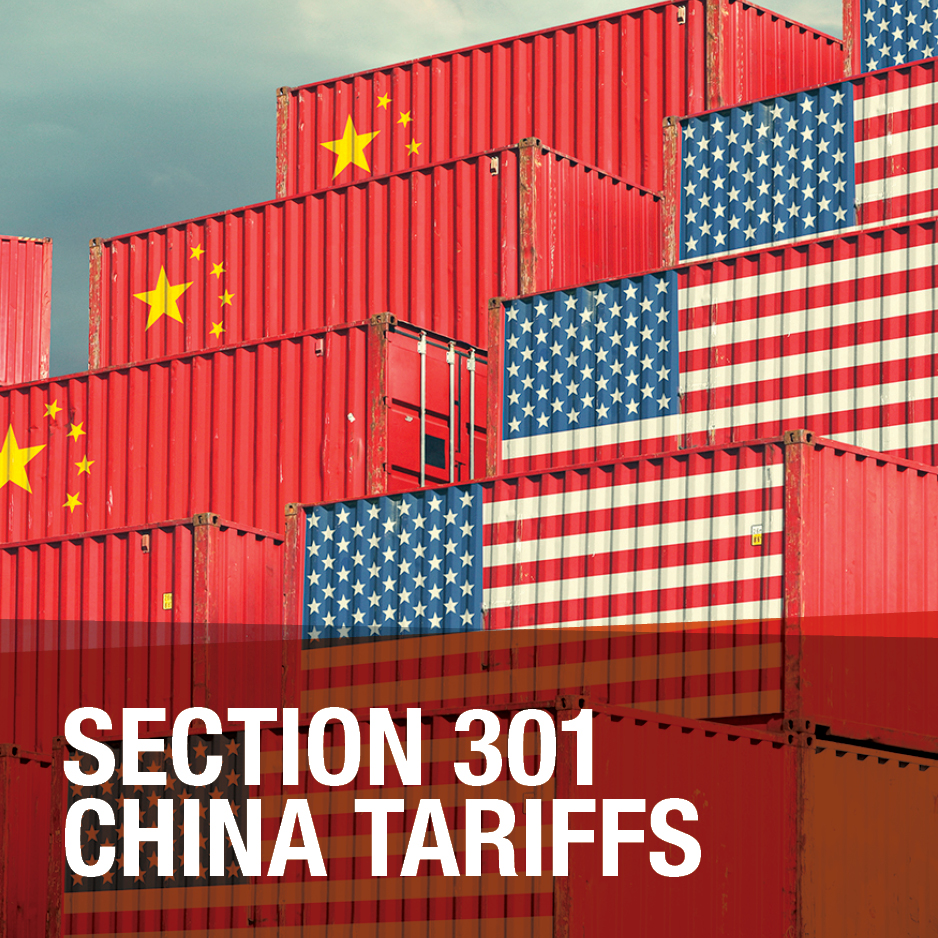
Tariffs and Trade
Tariffs & Trade Impacting the Automotive Aftermarket Latest News
The Auto Care Association is actively monitoring this evolving situation and will provide updates as new information emerges. Check this page regularly for the latest developments.
Has your business been impacted by Tariffs?
We welcome your feedback to help us better understand and assess the impact of these tariffs on our industry and businesses. Please share with us by contacting Angela Chiang, director, international affairs, at angela.chiang@autocare.org.
Share Your Impact StoryCurrent Status
On March 26, 2025, President Trump issued a proclamation imposing a 25% tariff on imports of automobiles (effective April 3, 2025) and certain automobile parts (tentatively effective May 3, 2025).
Current Status
Effective March 7, 2025, imports from Canada and Mexico that meet USMCA rules of origin are exempt from the additional IEEPA duties. Imports that do not satisfy USMCA rules of origin are subject to a 25% tariff rate. Energy products from Canada and potash from Mexico and Canada are subject to a reduced tariff rate of 10%.
Effective March 4, 2025, imports from China are subject to a 20% tariff rate, an increase from a 10% tariff rate that went into effect on Feb. 4, 2025.
Note that many products imported from Canada and Mexico were already duty-free under MFN rates, making USMCA declarations unnecessary. Under the new policy, importers must document and ensure USMCA compliance (if eligible) to be exempt from the IEEPA tariffs. Otherwise, the 25% IEEPA tariff would apply.
Current Status
On April 1, 2025, President Trump issued an Executive Order under the International Emergency Economic Powers Act (IEEPA) to establish a 10% baseline tariff and country-specific reciprocal tariffs on imported goods.
On April 9, 2025, President Trump issued an order delaying the country-specific reciprocal tariffs effective April 10, 2025. The country-specific reciprocal tariffs originally went into effect on April 9, 2025 and will be suspended for 90-days, after which the country-specific rates in Annex I will apply.
The baseline 10% tariff remains in effect for all products from all countries during this time, except for products that are covered by the exemptions listed in the original order (see below).
However, the 90-day pause does not apply to China due to their retaliatory tariffs on U.S.-origin goods. China's reciprocal tariff rate has increased from the original 34% to 84% and now to 125%. This applies to goods entered for consumption, or withdrawn from warehouse for consumption, on or after 12:01 a.m. EDT on April 10, 2025.
Current Status
As of March 12, 2025, the expanded Section 232 tariffs on steel and aluminum are now in effect. All imports of steel and aluminum are subject to a 25% tariff, and previous country exemptions and tariff-rate quotas have been eliminated.
The tariffs also apply to certain derivative products based on the steel and aluminum content. The product exclusion process has been terminated, meaning previously approved exclusions are no longer valid.
Current Status
The Section 301 China tariffs implemented in 2018-2019 remain in effect, with most tariff rates unchanged since their initial implementation. While some product exclusions have been extended, the majority have expired, except for a limited set scheduled to expire on May 31, 2025.
Additionally, a new 20% tariff on imports from China was imposed under IEEPA, taking effect on Mar. 4, 2025.
Trade and Tariffs Update: April 7, 2025
Below is the latest update on trade and tariffs for Auto Care Association members.
Recent tariff measures require supply chains to maintain a higher level of data granularity, including detailed information on inputs and production, in order to document and support value content declarations with a level of specificity that may not have been previously required.
We encourage you to consult with your customs broker or trade counsel for further guidance and to ensure compliance.
Webinar: Tariffs and Trade Update (as of April 9, 2025)
Wednesday, April 9, 2025 | 2:00 PM ET
This webinar will provide attendees with an overview of the current state of affairs on all tariffs. It will feature some best practice actions companies can take to help ensure compliance and mitigate tariff impact.
Register HereReciprocal Tariffs Announced on April 2
On April 2, referred to by President Trump as “Liberation Day”, the administration released its long-anticipated reciprocal tariff plan, imposing a 10% baseline tariff, effective April 5, on all imports into the United States. Additionally, 57 countries will face increased tariffs ranging from 11% to 50%, effective April 9.
(While earlier reports indicated that 60 countries would face increased tariffs, the list was revised following the president’s announcement to adjust tariff levels for three island nations.)
Calculations: Although the administration initially indicated that tariff rates would mirror those imposed by other countries on U.S. exports, the final rates are based on the U.S. trade deficit in goods (excluding services), as outlined in the USTR’s reciprocal tariff calculation methodology.
Drawback: According to the U.S. Customs and Border Protection CSMS notice on April 5, 2025, drawback is available on duties imposed under the reciprocal tariff order.
Exemptions: Certain goods will be excluded from the reciprocal tariff rates, including:
- Articles covered by IEEPA general exclusions (50 USC 1702(b)) such as donations, personal mail, informational materials, etc.
- Articles and derivatives of steel and aluminum currently subject to Section 232 tariffs
- Autos and auto parts currently subject to Section 232 tariffs
- Other products listed in Annex II, including copper, pharmaceuticals, semiconductors, lumber, certain critical minerals and energy and energy products
- Products from a trading partner subject to rates in Column 2 of the HTSUS (Cuba, North Korea, Russia and Belarus)
- All products that may become subject to future Section 232 tariffs
In other words, if your product is already subject to the steel and aluminum tariffs, the autos and autos parts tariffs or any of the other exemptions listed above, your product is exempt from these reciprocal tariffs.
The new tariffs will be applied in addition to any existing duties, fees, taxes, exactions, or charges—unless an exemption applies.
White Paper: The Auto Care Association has published a reciprocal tariffs white paper examining the history, theory, and potential economic impacts of reciprocal tariffs.
Tariffs on Autos and Auto Parts
A Federal Register notice released the list of auto parts HTS codes that would be subject to an additional 25% tariff on imports from all countries, effective May 3, 2025. Please review the notice to confirm if your products are impacted by this tariff action.
List of Auto Parts: Federal Register Notice, Annex I, page 11-12
The list covers a wide range of parts for passenger vehicles (sedans, sport utility vehicles, crossover utility vehicles, minivans, and cargo vans) and light trucks.
USMCA: For auto parts that qualify for USMCA preferential tariff treatment, tariffs are delayed until the administration establishes a process to apply the tariff exclusively to the value of the non-U.S. content. More information will be released in a forthcoming Federal Register notice. The tariff does not apply to auto knock-down kits or parts compilations.
Retaliation from Trading Partners
In response to recent U.S. trade actions, China announced countermeasures, including a 34% tariff on all U.S. imports. Canada has also imposed retaliatory tariffs on a number of U.S. imports with an exemption for auto parts.
De Minimis Exemption Revoked for China
On April 2, 2025, President Trump signed an executive order revoking the de minimis exemption for low-value imports from China and Hong Kong, effective May 2. As a result, all shipments from these regions, regardless of value, will now be subject to applicable duties.
Postal Shipments: Goods sent via international postal shipments, transportation carriers may elect to apply a 30% duty or $25 per item will apply, increasing to $50 per item after June 1. This is in place of any other duties, including those imposed by prior orders.
Non-Postal Shipments: Goods shipped through non-postal channels, all applicable duties will apply.
De minimis was previously eliminated through the IEEPA order on China but was delayed pending an implementation process.
Executive Order Fact SheetLawsuit Filed Challenging IEEPA Tariffs
The New Civil Liberties Alliance (NCLA) has filed a lawsuit on behalf of Simplified, a Pensacola, Florida-based stationery company that imports from China. The lawsuit argues that IEEPA does not authorize the president to impose tariffs and claims the 20% tariff on Chinese goods is unlawful.
Latest News
 On Your Behalf
On Your Behalf Press Release
Auto Care Association Submits Comments, Economic Study to USTR, Warns Proposed Shipbuilding Remedies Will Harm American Consumers, Businesses
 On Your Behalf
On Your Behalf Auto Care Association Joins Coalition Letter in Opposition of USTR's Shipping Remedies Proposal
 Press Release
Press Release Auto Care Association Responds to Trump Administration’s 25% Tariff on Steel, Aluminum Imports








Leave a comment